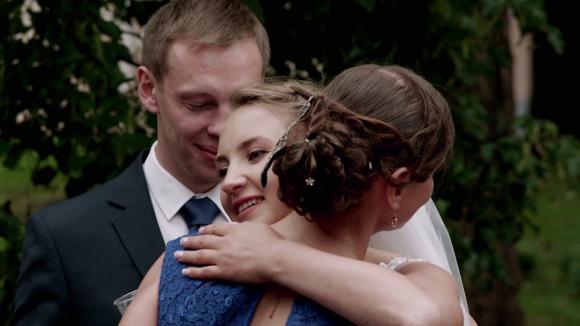On the roads to maturity

Already in her debut film “Deminas: Two Towers” (2015), Akvilė Gelažiūtė showed that she is interested in situations and characters that are unusual for Lithuanian documentary cinema, and her humour and attention to “light” topics can probably only be related to Giedrė Beinoriūtė (by the way, one of the characters of “Europe Unseen” also starred in Beinoriūtė’s “The Specialist” (2012)). In both films, Gelažiūtė chooses to film a process, the final outcome of which neither her nor the heroes seem to know. The main characters of the first film are Deminas and his “hostages” – brother Patrikas and cousin Robertas. In “Europe Unseen” – two best friends Irma and Žydrūnė and her husband Algirdas. Relationships of the former unfolded in a theatre box, while those of the latter – during a trip through Central Europe and Romania, spending most of their time in a relatively confined space – a campervan.
So, as the film modestly states, Žydrūnė has 2% of vision and Irma doesn’t see at all, and they are best friends, they live together for ten years. But the idyll of these girlfriends (which is witnessed by one of the first scenes, in which girls bake lasagne together) is shaken by the fact of Žydrunė and Algirdas’ wedding. The lives of the characters change, the newlyweds move to live together. Thus, a two-week post-wedding trip on a campervan through the bumpy roads of Romania, which is taken by the newlyweds and a group of friends (apart from the film crew, six of them) becomes a sort of a ritual of transition from one stage of life to another. And “Europe Unseen” becomes a story of the maturity that befalls us sooner or later. Not for nothing does the film begin with archival footage of Irma reading “Peter Pan”.
And then Gelažiūtė will put clear emphases in the film. In the first half of “Europe Unseen” we will see a group of grown-up children joking around, drawing the Dracula’s castle, riding bumper cars in an amusement park, playing hide-and-seek, etc. However, as the trip goes on, the characters get tired of the daily routine in the campervan, and they become increasingly irritable, grumpy, and tensions between Irma and Algirdas become apparent. These two are increasingly “ardent” in opposing each other’s opinion (competition-driven confrontation?). And Žydrūnė herself seems not very happy with the “romance” of her post-wedding trip. This can be understood from ironic dialogues, although faces and body language of the characters captured by Martynas Norvaišas’ attentive camera are by far more eloquent. For example, the bond between the girls is best revealed by them holding hands: it shows both their intimate connection and how they need each other. By the end of the film, Irma is more and more distanced physically from Žydrūnė, and the friend’s hand is replaced by a white wand. And the lively conversations between the characters shift towards a slightly gloomier mood, we see more contemplative shots and faces, tired from the journey.
In general, Gelažiūtė, who has chosen not to disclose the prehistory and various facts of life of her characters, shows that relationships, human nature, and feelings, which unfold here and now, are the most important to her. Once again, the film reveals the director’s sensitivity to the documentary material, she is not trying to provoke her characters with voice-over comments, nor does she terrorize them with the camera to get useful footage or a more eloquent shot. On the contrary, she maintains a respectful distance that would seem hardly possible in such circumstances. Gelažiūtė also demonstrates maturity of the young creator without exploiting the theme of people with disabilities. Rather on the contrary, she subtly shows how they experience the world, even make fun of themselves.